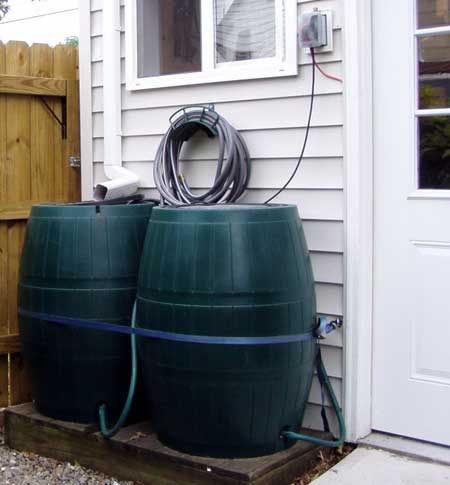8 Myths to Avoid When Watering Your Plants
Watering plants isn’t an exact science. Read this article to help you understand when to and when to not water plants.
Before falling out of favor in the mid-1900s, rain barrels were household items. Now, due to drought and rising water bills, they’re making a comeback as green, eco-friendly alternatives to public water.
Rain barrels are designed to capture roof runoff of rainwater instead of letting it flow into the yard, down the driveway, or into storm drains. Typically, they hold 50 to 60 gallons and are attached to downspouts. Cisterns are usually larger, underground, and fed by a hose or drainpipe. Both store water until gardeners tap into it to water patio containers, top off water gardens or quench thirsty flower and vegetable beds.

© George Weigel
Stored rainwater isn't just free—it remains at air temperature. Plants thrive on it, glad to avoid the shock of cold well water on a hot day. Unlike public water, which is treated to reduce bacteria, rainwater is free of chemicals that may cause problems for plants. Storing rainwater also helps conserve the supply of treated public water and reduces run-off that otherwise might stress the storm-sewer system.
Rain barrels are readily available at most garden centers, home centers, and online. Almost all are made of heavy, molded plastic, and some are more aesthetically designed to look like urns and planters. Prices range from $100 to $180.
Handy gardeners can build their own rain barrels for a fraction of the cost by using recycled containers, hardware-store-bought hose and fixtures, and a spigot to access water from the bottom of the barrel.
When placing the rain barrel, set it on a level surface. Bricks or blocks are helpful to raise one side if necessary.
Enjoy the next rainstorm knowing that your next water bill will be a fraction of the usual one, and feel free to water the garden without the worry of running up the tab.